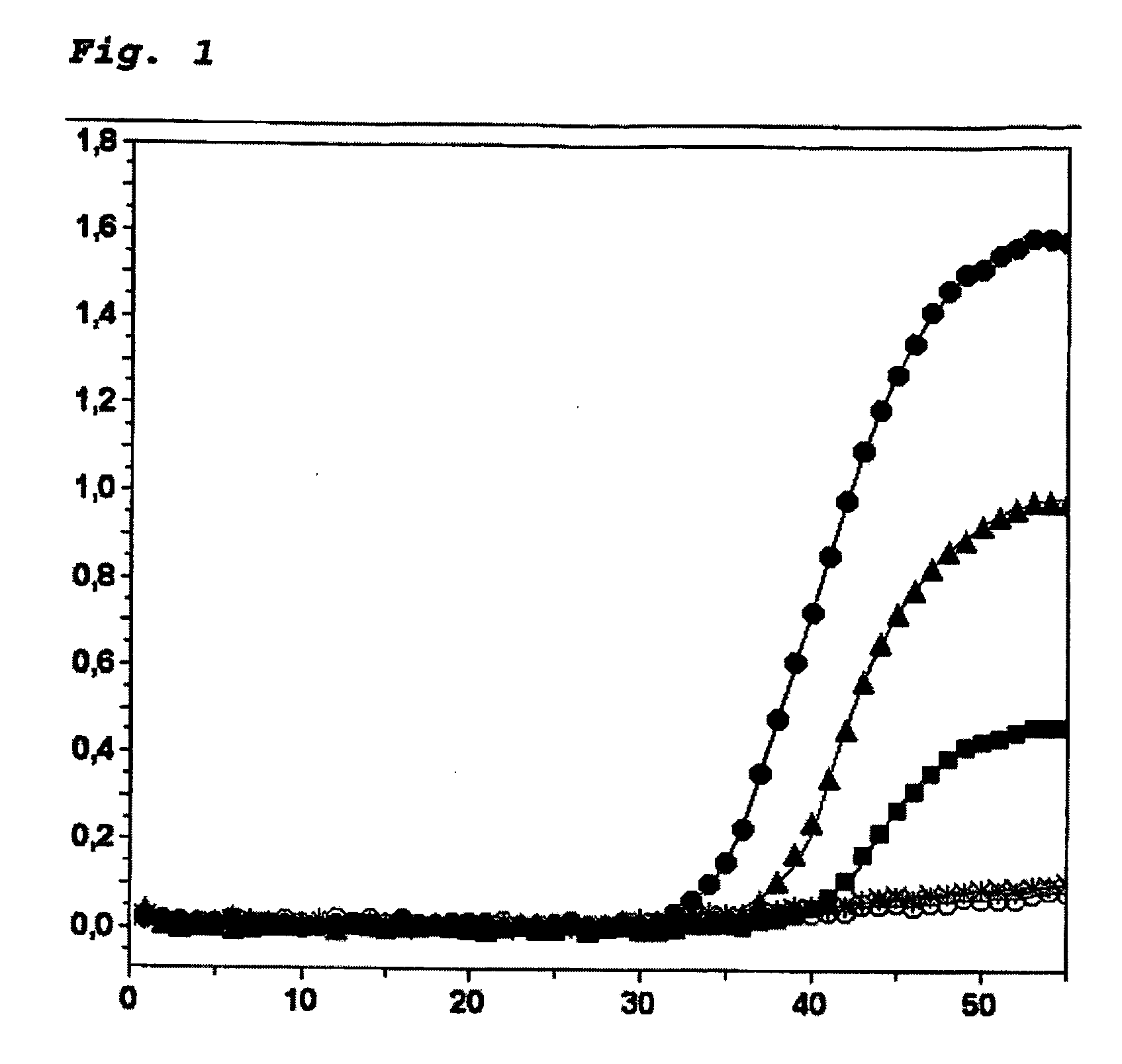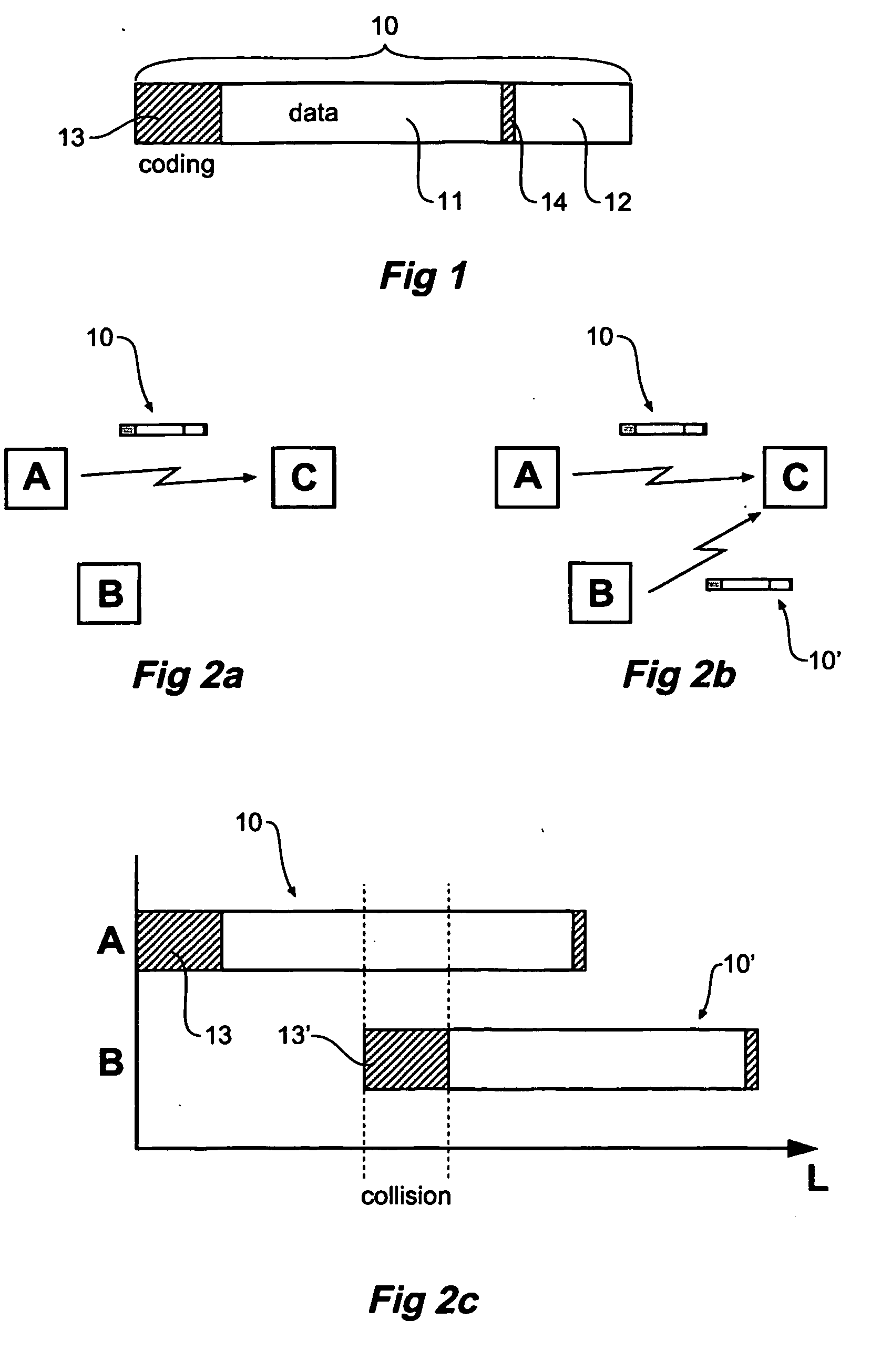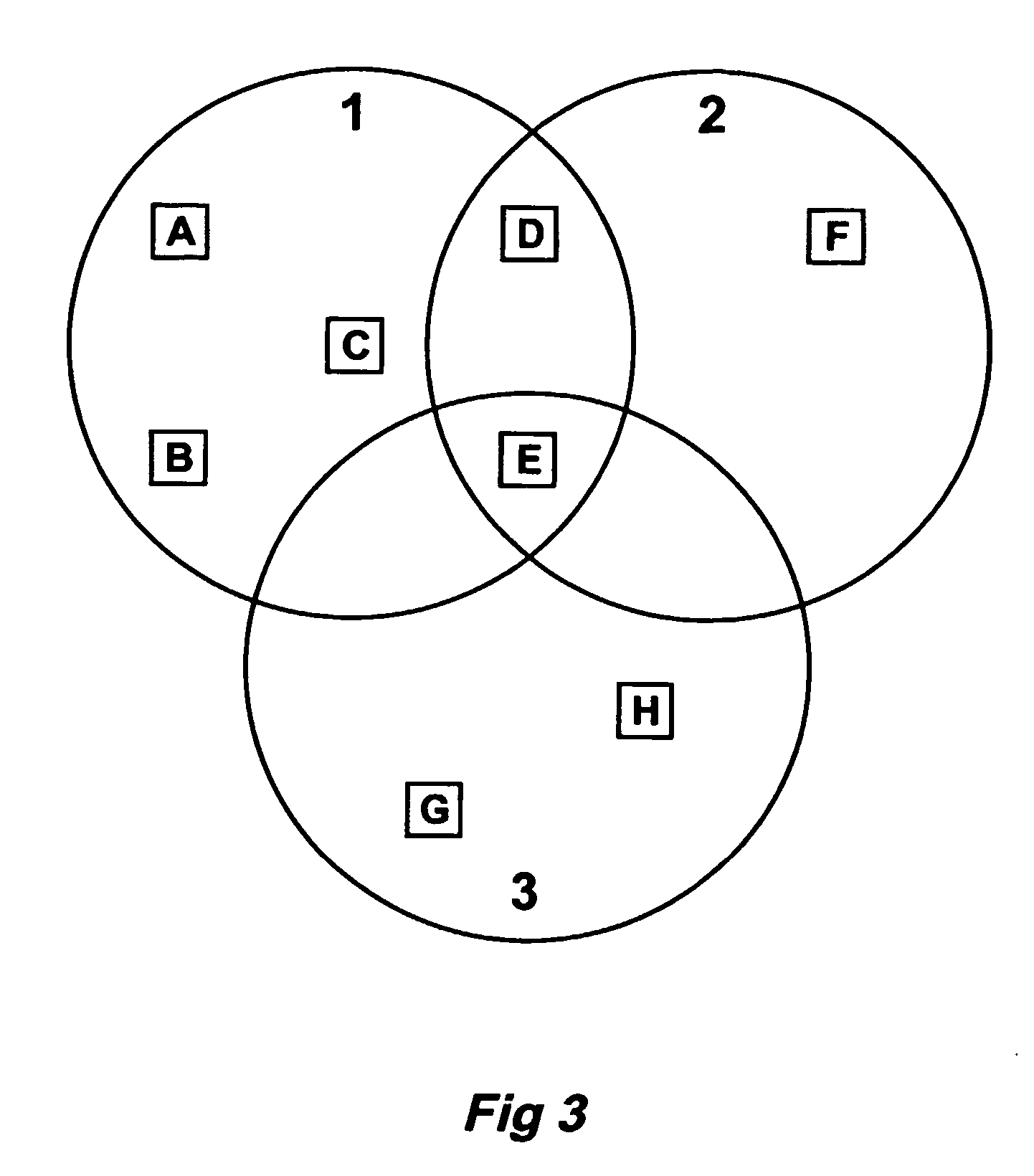Collision detection in a non-dominant bit radio network communication system
a radio network communication system and collision detection technology, applied in the network field, can solve the problems of waste unnecessary complexity, poor use of the available bandwidth of the communication medium,
- Summary
- Abstract
- Description
- Claims
- Application Information
AI Technical Summary
Benefits of technology
Problems solved by technology
Method used
Image
Examples
Embodiment Construction
[0049] According to an aspect of the present invention, any collisions that occur, will be detected through the use of coding of data frames transmitted by devices within the network.
[0050] There are two types of collisions that can occur. The first is between two devices, which are in range of each other, that for some reason started transmitting data at the same time. In spite of various avoidance method techniques traditionally used, such as monitoring the medium before transmission and staggering the subsequent transmission of data by devices in accordance with each devices' unit address, a collision may still occur. In this case, the data transmissions will overlap each other in time.
[0051] The other type of collision, and one that is more likely to occur, is in the case where a device needs to transmit data to other devices distributed over several separate networks. Across two of these networks for example, some devices will be close to each other (even though in different ...
PUM
 Login to View More
Login to View More Abstract
Description
Claims
Application Information
 Login to View More
Login to View More - R&D
- Intellectual Property
- Life Sciences
- Materials
- Tech Scout
- Unparalleled Data Quality
- Higher Quality Content
- 60% Fewer Hallucinations
Browse by: Latest US Patents, China's latest patents, Technical Efficacy Thesaurus, Application Domain, Technology Topic, Popular Technical Reports.
© 2025 PatSnap. All rights reserved.Legal|Privacy policy|Modern Slavery Act Transparency Statement|Sitemap|About US| Contact US: help@patsnap.com



